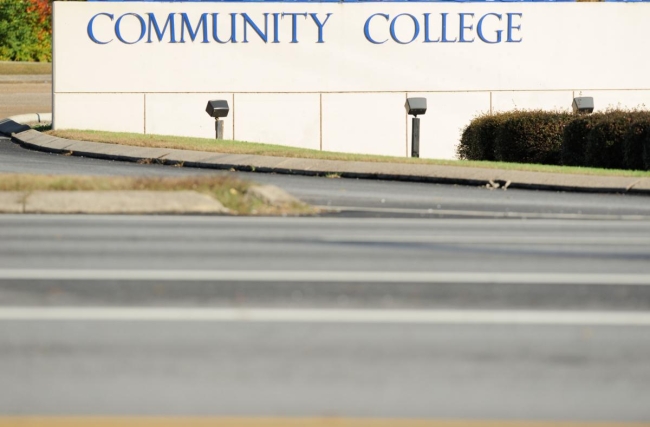You have /5 articles left.
Sign up for a free account or log in.

sshepard/iStock/Getty Images Plus
It is an unfortunate reality that in America the gap between rich and poor has grown over the last 50 years. This increasing wealth gap has come at the expense of the middle class, once a defining characteristic of the American dream, now a sort of economic vanishing point on a horizon of distress and unrest.
Jobs demand education. The health and stability of the American economy depends on the innovation of its public educational system and, in particular, the innovation of its community colleges.
During historical periods of growth and industrialization, the American system of public education provided a common foundation. In particular, community college two-year degrees created uniquely American paths to innovation, specialization and worker mobility, an accessible bridge from high school education to employment and transfer to four-year institutions. Both pathways—technical education for employment and higher education transfer—remain key to increasing lifetime earnings for individuals and families, creating a strong middle class.
With new technologies changing the face of almost all industry sectors, there is now an urgent demand for higher-level skills that are associated with a baccalaureate degree. However, the traditional models of achieving a four-year education present cost and logistical obstacles to expanding at scale. The rising cost of obtaining a four-year degree can be a disincentive, even when the first two years can be completed at an affordable community college. Travel and housing costs can overly burden low-income families and students living in exurban and rural areas where the closest university may be hundreds of miles away. The strongly local character of community colleges can be difficult to recreate at universities that serve larger regional or even national needs.
Community college baccalaureate degrees have emerged as an innovative solution. In the 1980s, Parkersburg Community College in West Virginia became the first to establish a community college baccalaureate (CCB) program. Today, about half of the states allow community colleges to offer baccalaureate degrees, and there are hundreds of CCBs offered nationwide. As of 2019, an estimated 121 community colleges granted CCBs.
CCBs must now be leveraged to rebuild the middle class. We can skill up our nation in a rapidly developing technological environment by making baccalaureate programs available at the neighborhood community college.
Community colleges enroll large numbers of students of color and students from lower-income families. Having easy access to an affordable, high-quality baccalaureate degree is essential to economic and social mobility, making the American dream less elusive.
There are upwards of 1,000 community colleges in the United States located in every part of the country, including in remote areas where housing is affordable for low-income communities. Where CCBs already exist, baccalaureate degrees open pathways to quality jobs in high-demand industries like health care, as well as emerging industries like clean energy. Community college baccalaureate programs, governed by locally elected boards and serving local communities, are rigorous, accredited and have similar professional benefits as more costly regional options. Employment data from the New America Foundation show that graduates from CCB programs “enjoyed high rates of employment similar to those of university graduates,” suggesting that CCBs expand opportunities for students who may not have otherwise pursued a bachelor’s degree. The New America research also found that CCB graduates initially earned higher wages than their university counterparts, though university graduates tended to close that gap over three years.
CCB degrees are nimble in responding to local workforce needs. An example is a bachelor of science degree in industrial automation at Bakersfield College, which is one of the colleges in the Kern Community College District, where I am chancellor. The college leadership along with their local industry partners recognized the growing trend toward automation among key economic sectors in California’s Central Valley—agriculture, energy, aerospace and logistics. The program trains students in the skill sets required for the automation that is happening across industry in the region and has a 100 percent job placement rate.
The use of CCBs is expanding. According to researchers at New America, “An increasing number of states are introducing and expanding the authority for community colleges to confer bachelor’s degrees in applied fields.” In May 2021, Arizona governor Doug Ducey signed into law Senate Bill 1453, and in October 2021, California governor Gavin Newsom signed into law Assembly Bill 927, in both cases allowing community colleges in their states to confer bachelor’s degrees. (California’s legislation enabled existing programs started on a pilot basis to become permanent and allowed the state’s community college system to offer up to 30 new bachelor’s programs per year.)
A good deal of progress on delivering greater educational access to low-income students has been achieved. While further closing the wealth gap will remain a generational challenge requiring the mobilization of various other parts of government and society, CCBs are well positioned to play a significant role in academia. Expanding the role of CCBs is an agile and scalable solution to four-year degree market demand, creating local availability blended with local demand and local governance.
More resources should become available to expand CCB programs. CCBs should be widely recognized as a vital tool for growing economic and social mobility of disinvested communities, and for the vitality of America’s middle class.
It’s a change that can’t happen too soon.




